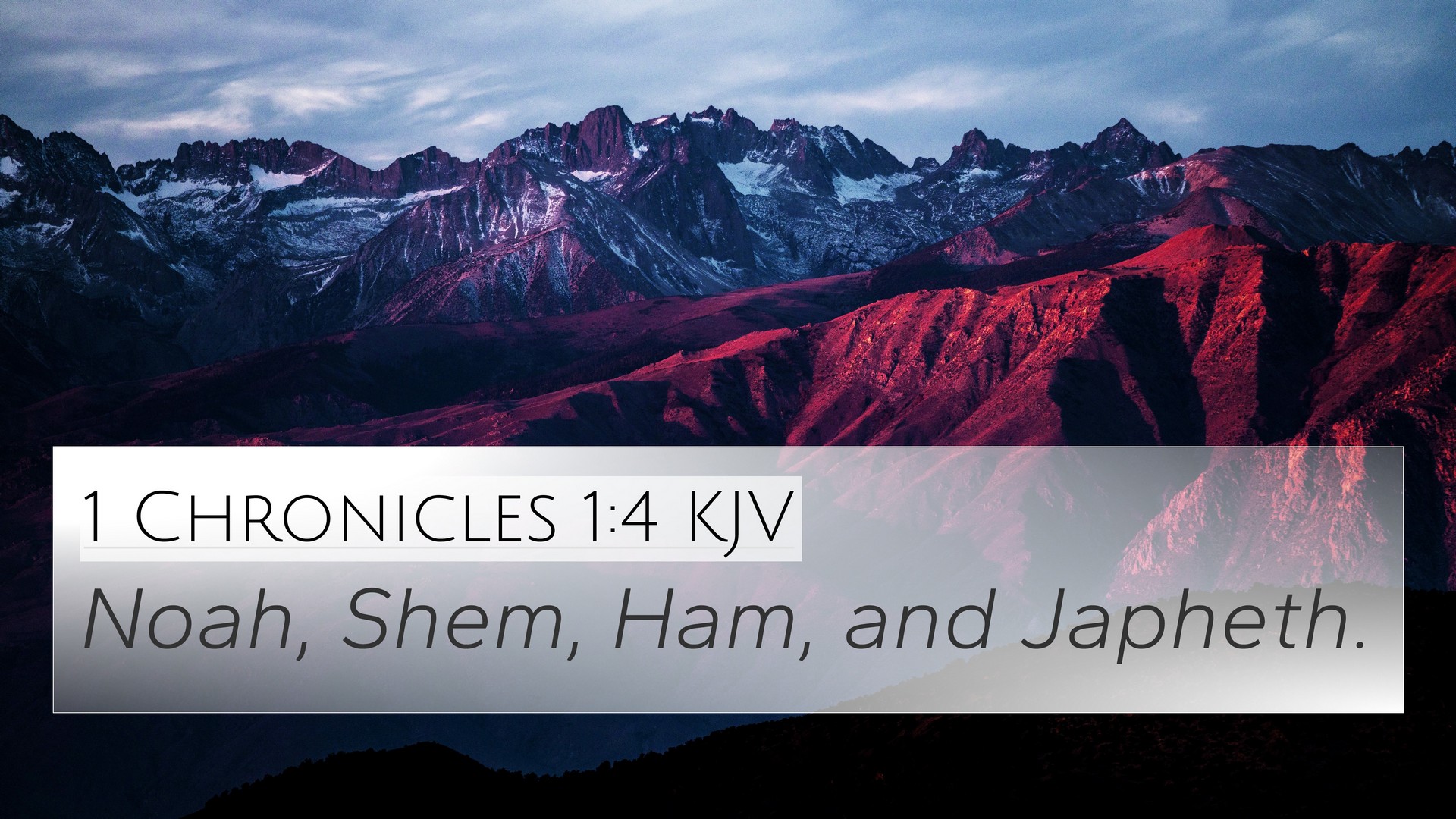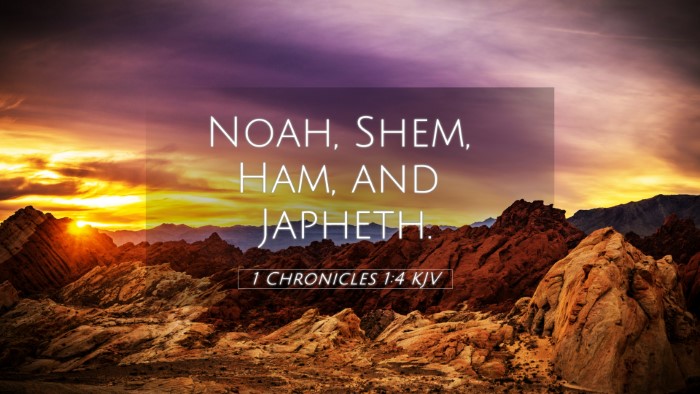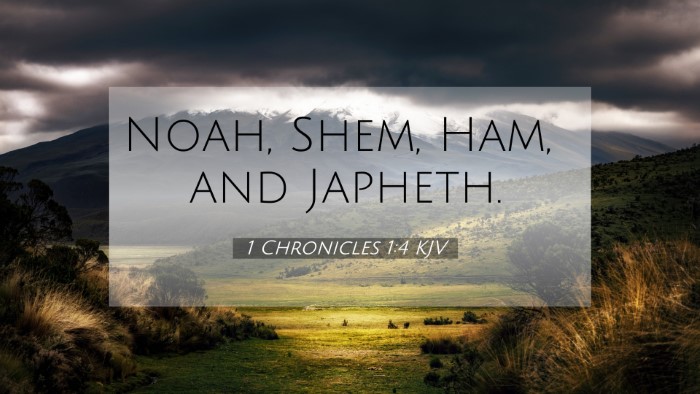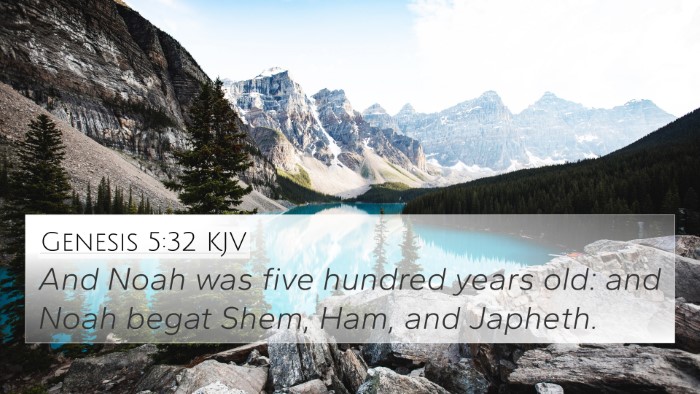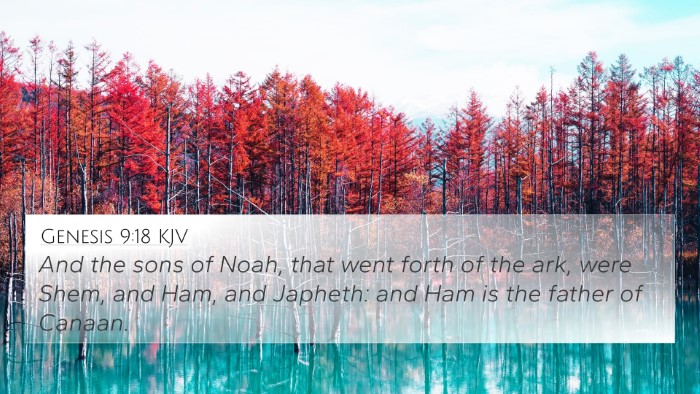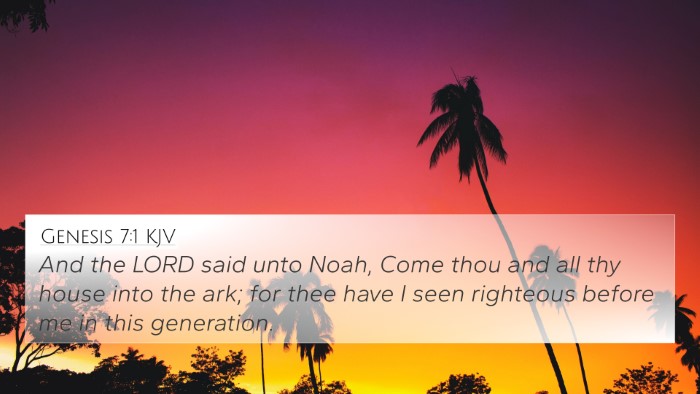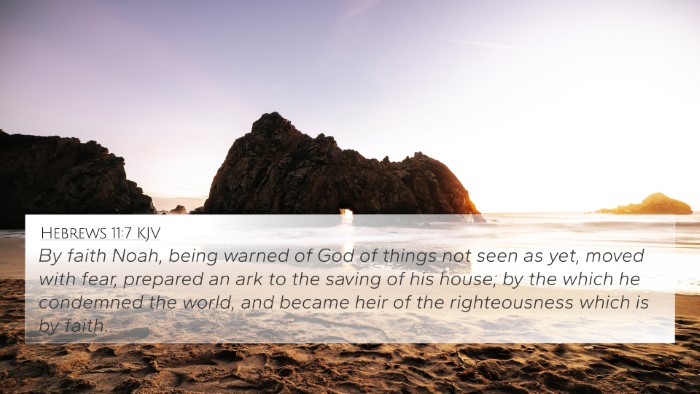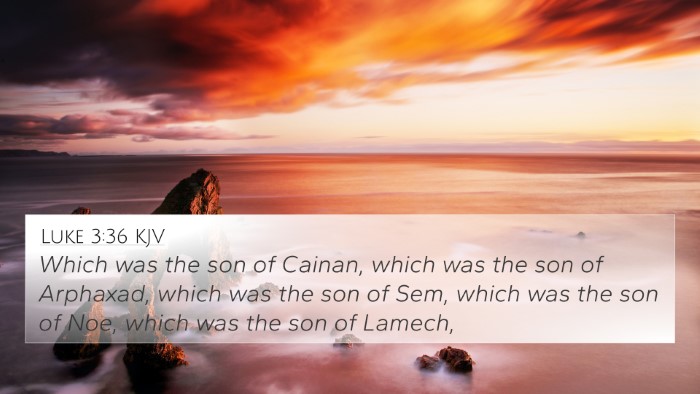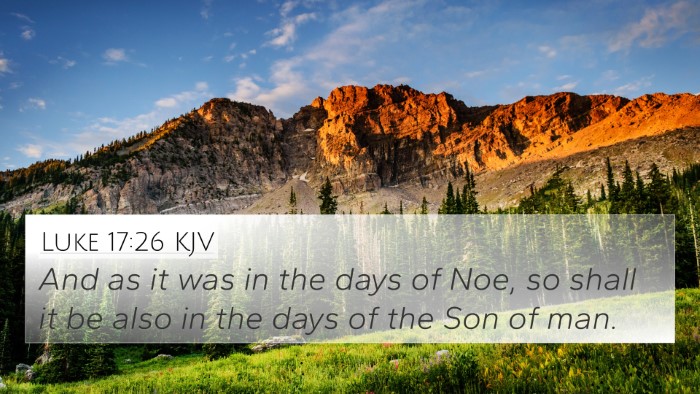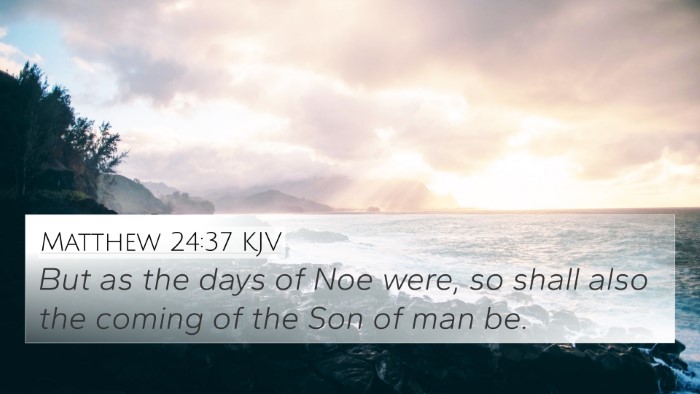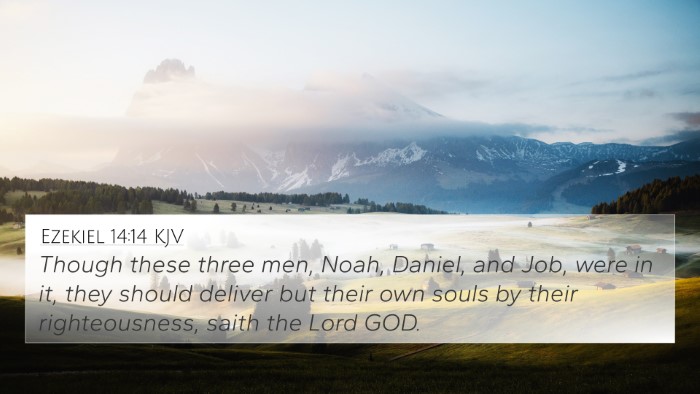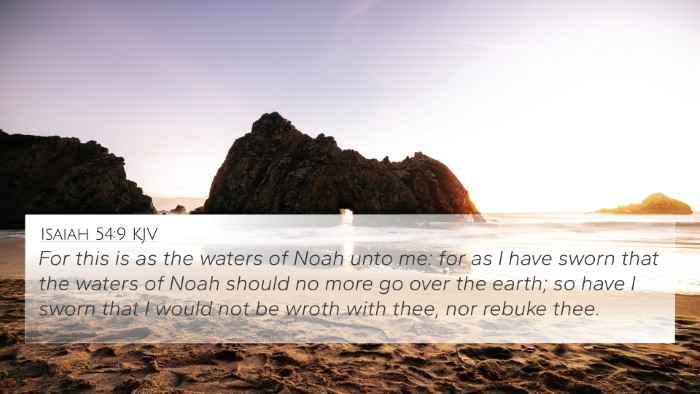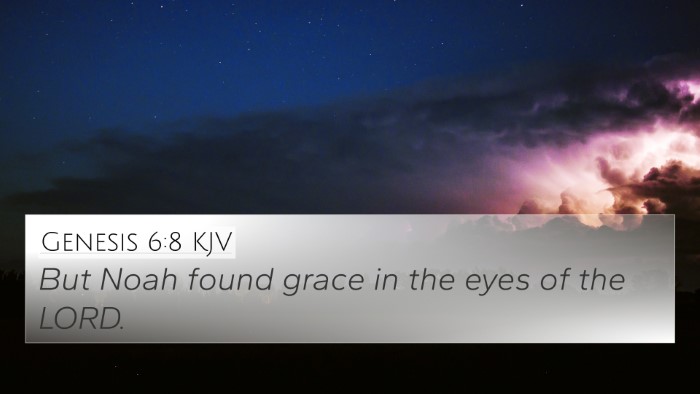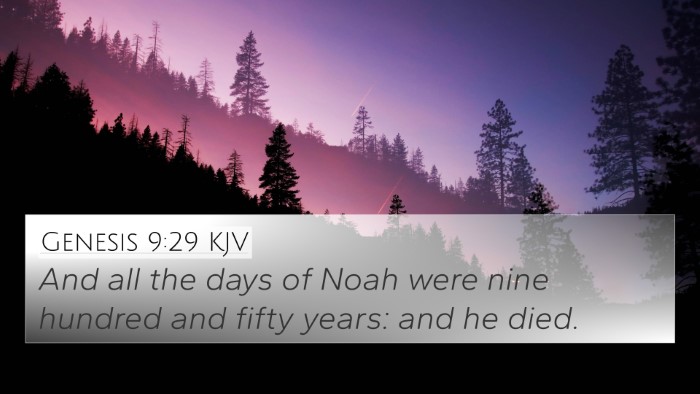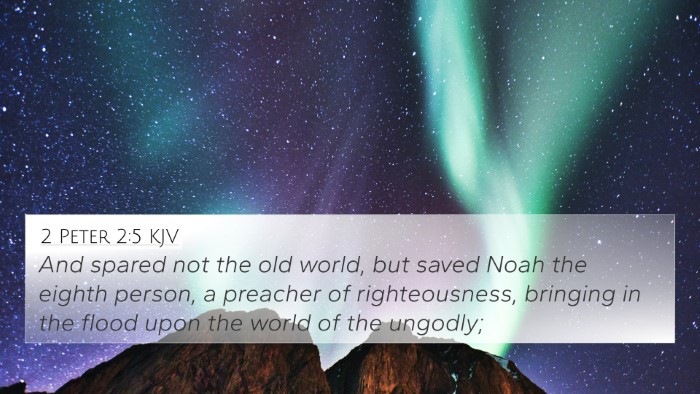Understanding 1 Chronicles 1:4: A Comprehensive Analysis
Bible Verse: 1 Chronicles 1:4 - "Noah, Shem, Ham, and Japheth."
This verse introduces the key figures of the Genesis narrative, listing Noah and his three sons, who are foundational to the genealogical accounts of the Old Testament.
Verse Meaning and Context
This passage succinctly encapsulates the significance of Noah's lineage. It serves as a prelude to the genealogical setup that defines the rest of the biblical narrative. Below are insights derived from notable public domain commentaries:
-
Matthew Henry:
Henry emphasizes that the listing of Noah's sons signifies the repopulation of the earth after the flood. Each son represents distinct nations and peoples that evolve from them, pointing to God's providence in sustaining human life and His overarching plan for humanity.
-
Albert Barnes:
Barnes notes the theological implications of the names, highlighting that each son’s descendants form vital groups among the nations. He discusses the historical contexts in which these names reappear throughout the scriptures, establishing a connection to the broader narrative of God's dealings with man.
-
Adam Clarke:
Clarke offers a deep dive into the etymology and significance of each name, noting how these figures become pivotal in the unfolding of biblical history. He also touches on the principle of inheritance and the responsibilities passed down through generations.
Bible Verse Cross-References
The study of 1 Chronicles 1:4 can be enriched through cross-referencing with these related verses:
- Genesis 6:10: "And Noah had three sons, Shem, Ham, and Japheth." - A direct mention of Noah's sons, establishing the primacy of their lineage.
- Genesis 9:18: "And the sons of Noah, that went forth of the ark, were Shem, Ham, and Japheth." - Further elaboration on their significance after the flood.
- Genesis 10:1: "Now these are the generations of the sons of Noah, Shem, Ham, and Japheth..." - Introduces the descendants and nations derived from these three figures.
- Luke 3:36: "Which was the son of Cainan, which was the son of Arphaxad, which was the son of Shem..." - This verse connects Shem's line to the genealogy of Jesus, emphasizing the importance of these familial connections.
- Isaiah 54:9: "For this is as the waters of Noah unto me..." - Illustrates God's covenant with Noah as a pivotal moment in biblical history.
- Hebrews 11:7: "By faith Noah, being warned of God of things not seen as yet, moved with fear..." - Noah's faith and obedience are highlighted, marking him as a central figure in biblical faith narratives.
- 1 Peter 3:20: "Which sometime were disobedient, when once the long-suffering of God waited in the days of Noah..." - References the context of Noah's time and the importance of his lineage in relation to salvation themes.
Thematic Bible Verse Connections
Understanding 1 Chronicles 1:4 involves recognizing its thematic connections throughout the scripture, particularly regarding:
- Noah’s Covenant: The enduring promise God made to Noah, as reflected in Genesis 9:11, establishing a global framework that resonates throughout biblical texts.
- Faithful Lineage: The generational importance of faithful lineage can be traced from Noah to Jesus, emphasizing God's unfolding plan as shown in Matthew 1.
- Humanity's Restoration: The theme of restoration after the flood has parallels with the idea of redemption found throughout the New Testament, highlighting God's mercy and grace.
Cross-Referencing Biblical Texts
Engaging in cross-referencing Bible study enhances our understanding of 1 Chronicles 1:4. Tools such as a Bible concordance and cross-reference guides can lead to deeper insights.
Tools for Effective Cross-Referencing:
- Utilization of a Bible cross-reference system to identify relationships between passages.
- Employing comprehensive Bible reference resources to enhance thematic studies.
- Engaging in cross-reference Bible study methods for a more structured approach to scriptural connections.
Conclusion
In summary, 1 Chronicles 1:4 serves not only as a genealogical marker but also as a rich source for understanding the development of biblical history and theology. The connections drawn from this verse to its cross-references allow for a more nuanced understanding of the overarching narrative of Scripture.
